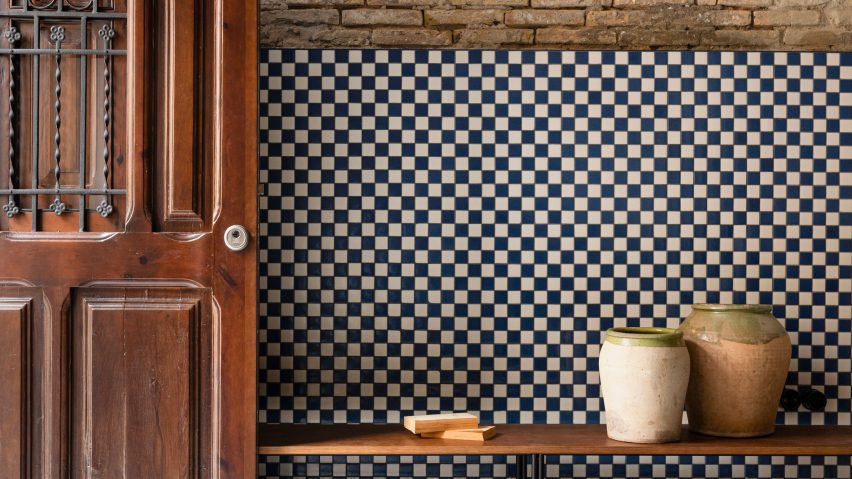
Viruta Lab blankets former fisherman's house in Valencia with chequerboard tiles
Spanish interiors studio Viruta Lab has renovated a compact house in El Cabanyal, Valencia's traditional fishing neighbourhood, using geometric blue-and-white tiling for an understated nautical aesthetic.
Built in 1946, the humble two-storey building once belonged to the grandparents of the current owner but had been boarded up for many years.
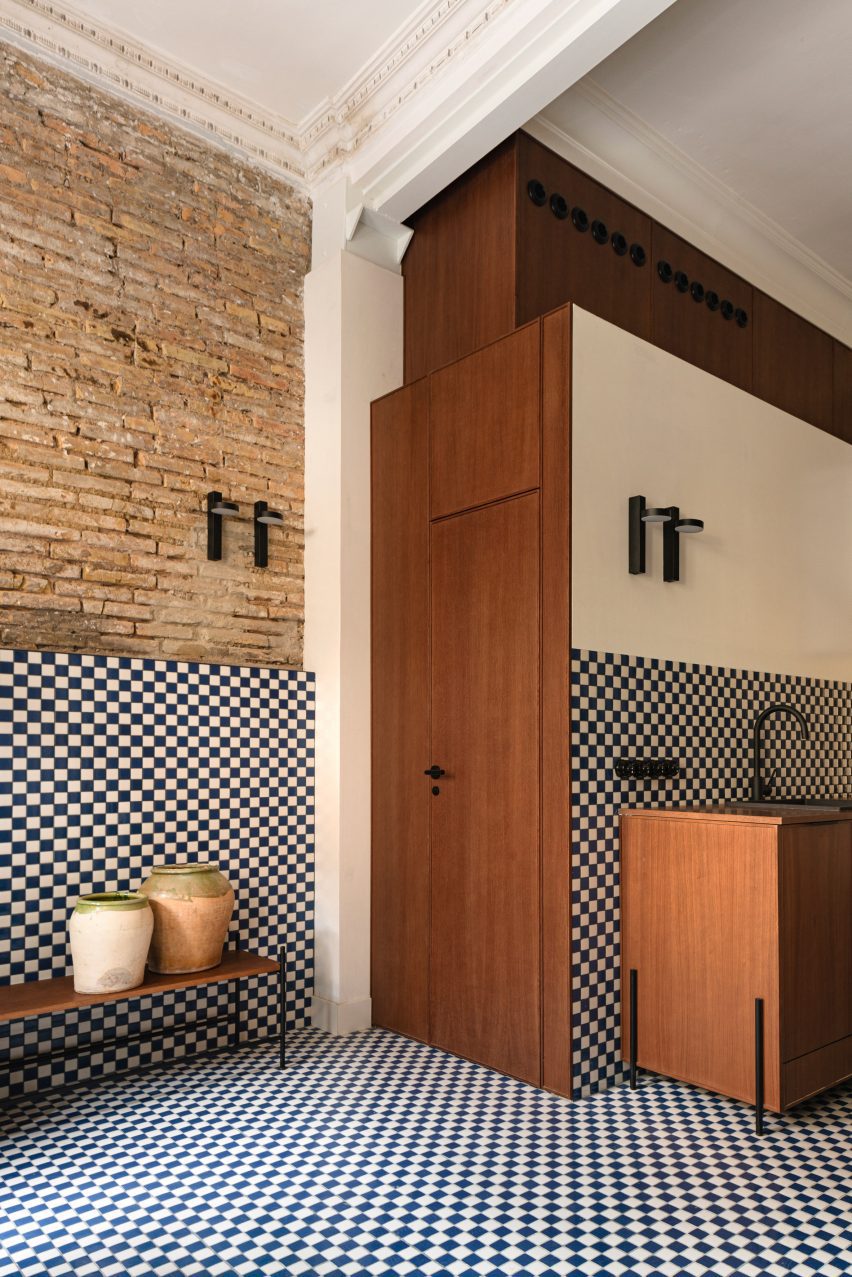
Viruta Lab was brought on board to transform the small 85-square-metre home into a modern holiday residence while respecting its great sentimental value to the family.
"Emotion was a very important starting point," the studio told Dezeen.
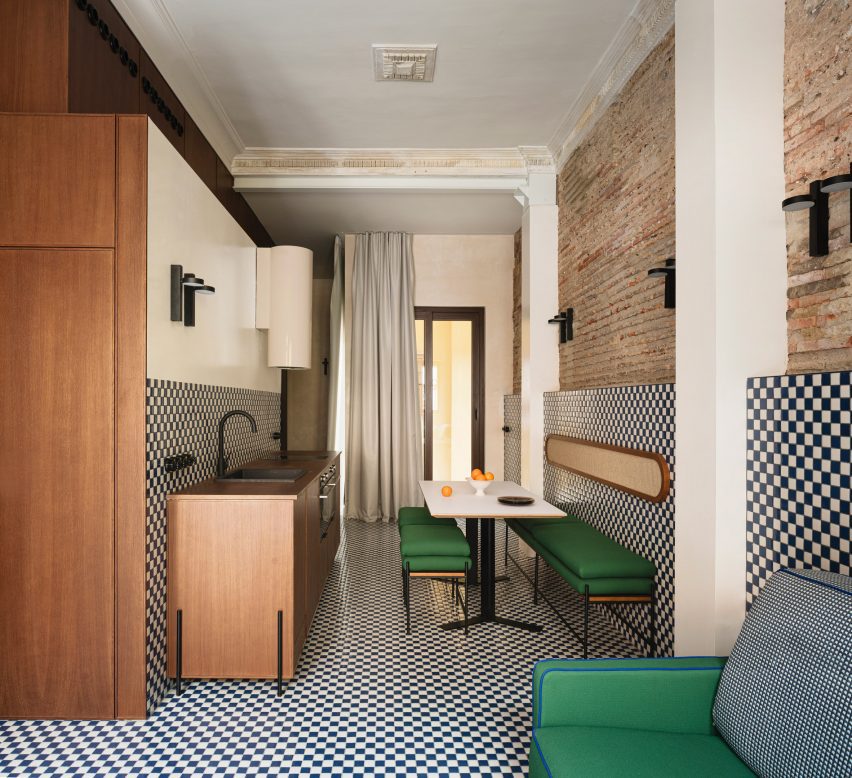
"The house is a family legacy and the image they have of it is very deep, so it was necessary for any intervention to be as respectful as possible and with a language that they understood and took as their own," Viruta Lab continued.
"We understood that the architecture already had a value, that we only had to beautify it, preserve it."
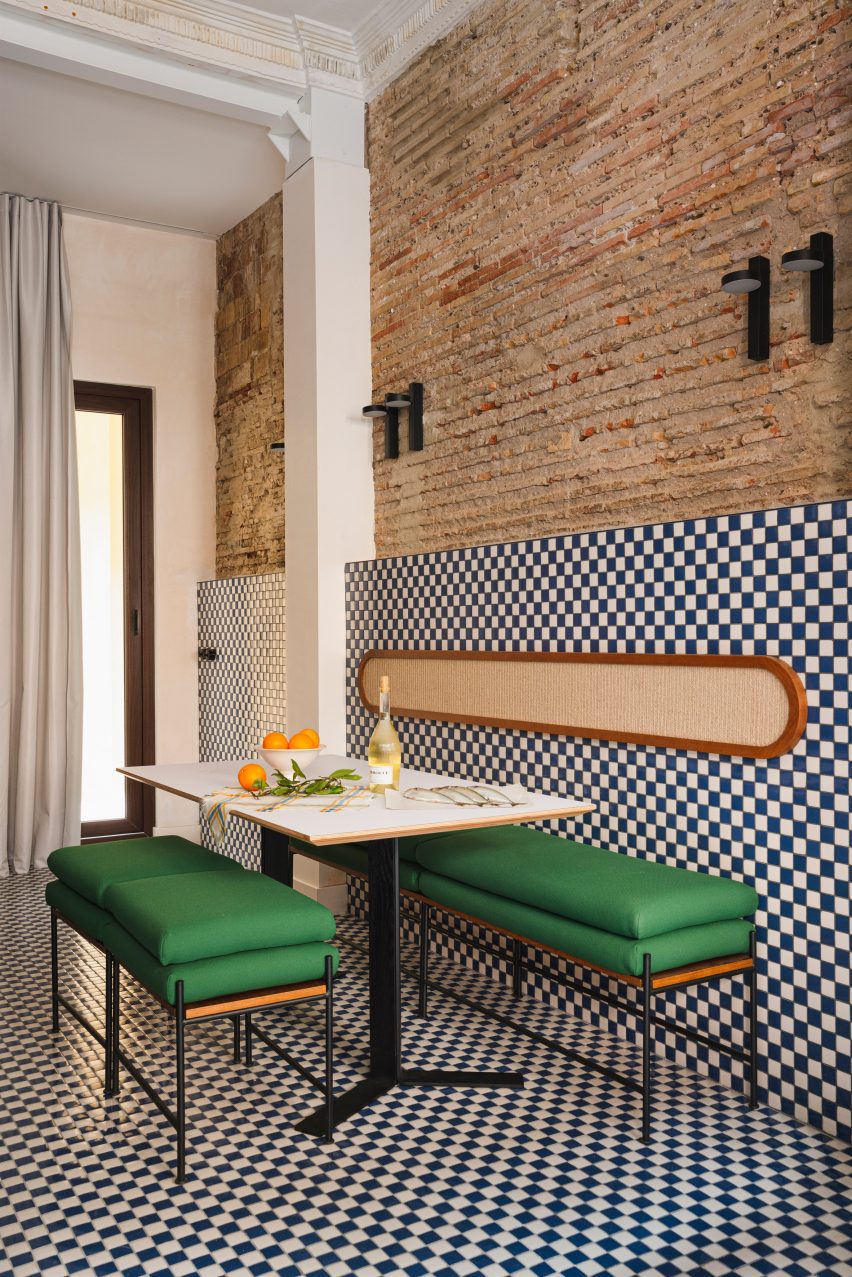
Viruta Lab uncovered the building's original brick walls from under layers of peeling paint and carefully repaired the pre-existing mouldings "to give height and nostalgic value to the interior design".
Liberal chequerboard tiling provides a contrast to these traditional design details, featured throughout all the rooms from the kitchen to the sleeping quarters.
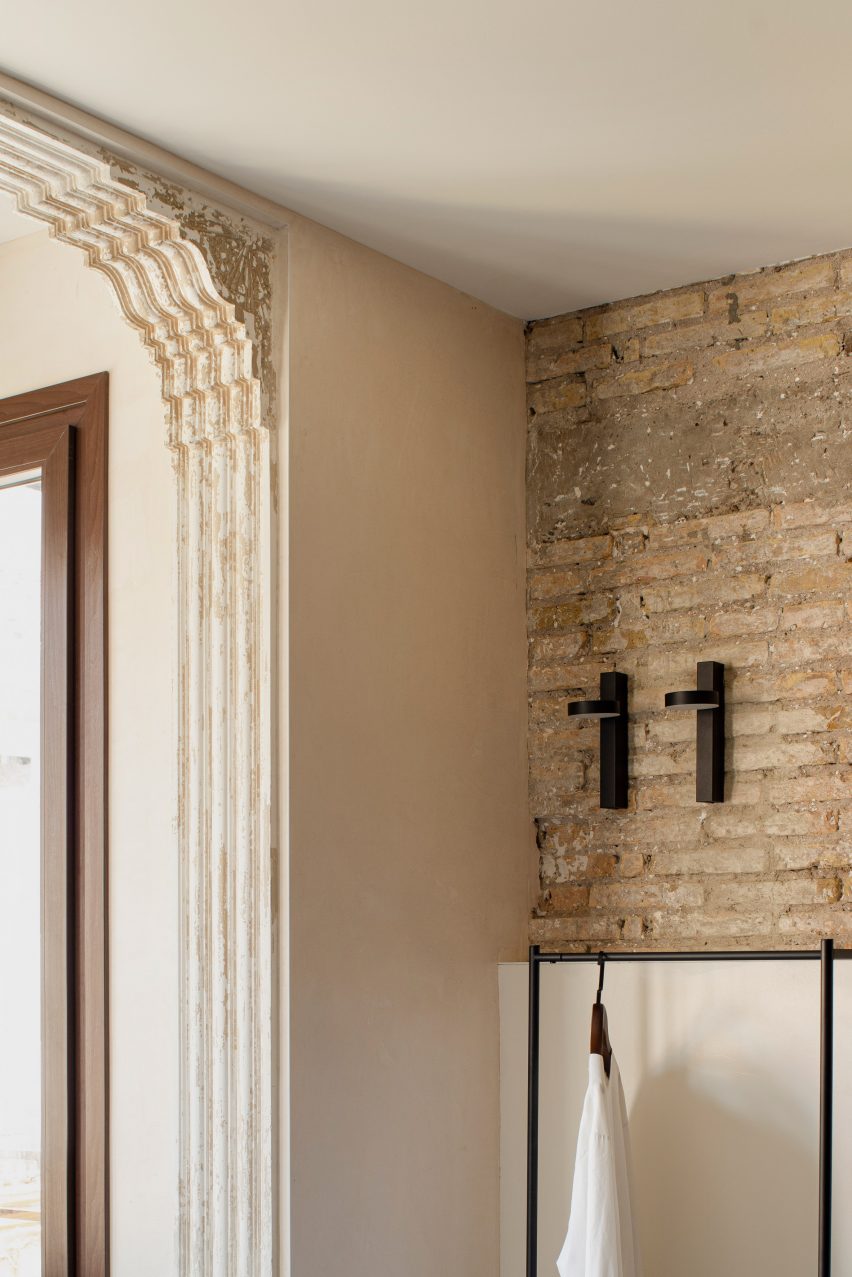
In a suitably nautical palette of navy and off-white, the tiles reference the great variety of tiled facades found in the El Cabanyal neighbourhood.
"The dominant colours on the facades of the Cabanyal are white, blue and green, which are associated with a lifestyle linked to the resources offered by the sea," the studio said.
"It was clear that we had to respect the local traditions, the architecture and the essence of the house and give it a maritime aesthetic, reinterpreting the Mediterranean style to adapt it to the tradition of the neighbourhood using its own materials."
Green shows up throughout the interior in the form of simple upholstered furniture – including a sofa, pouffe, benches and stools – all custom-designed by Viruta Lab for this compact space.
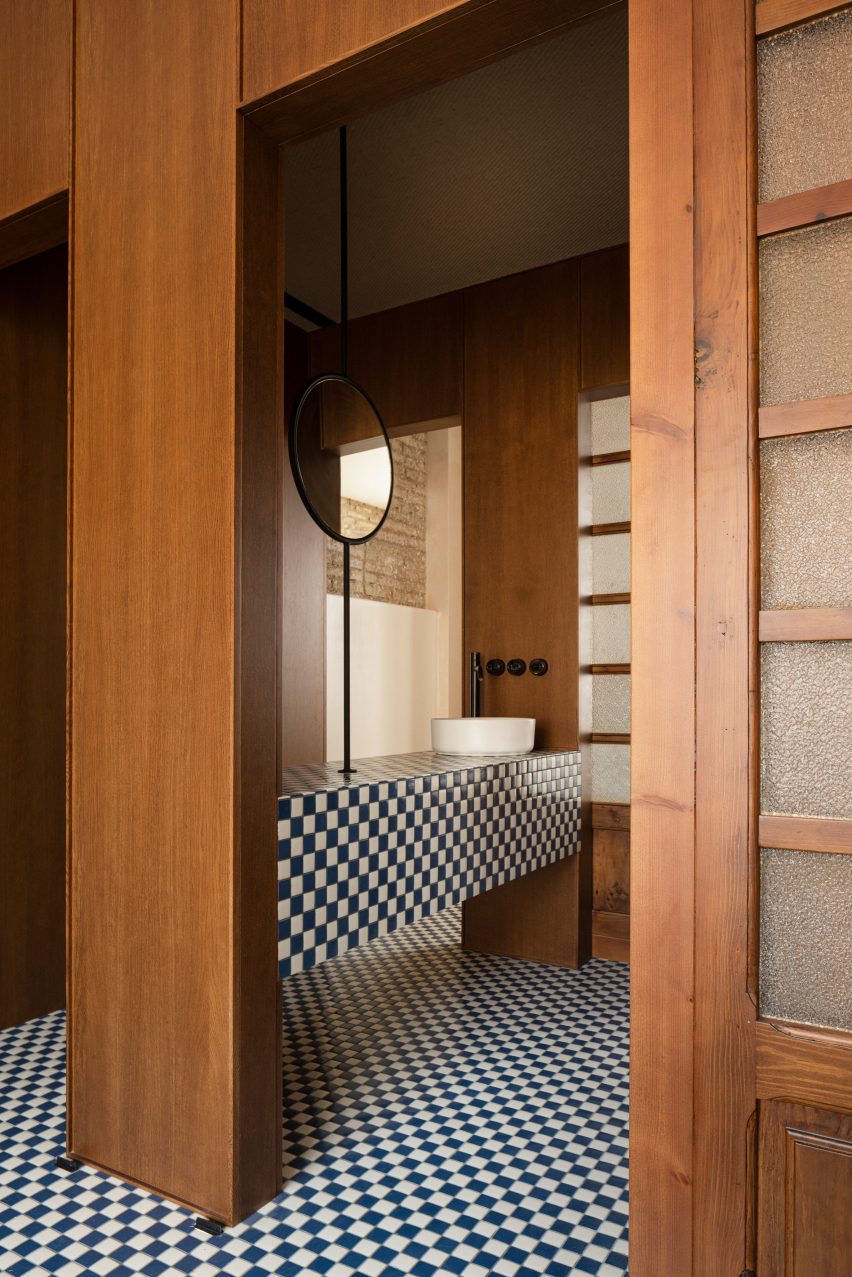
The interior woodwork in European oak was stained to resemble Canaletto walnut, matching the tones of the two remaining original interior doors that were painstakingly restored and repurposed as sliding doors.
"We wanted the woodwork to provide a quality counterpoint to the cold tones of the blues and greens, with an imprint and weight," the studio said.
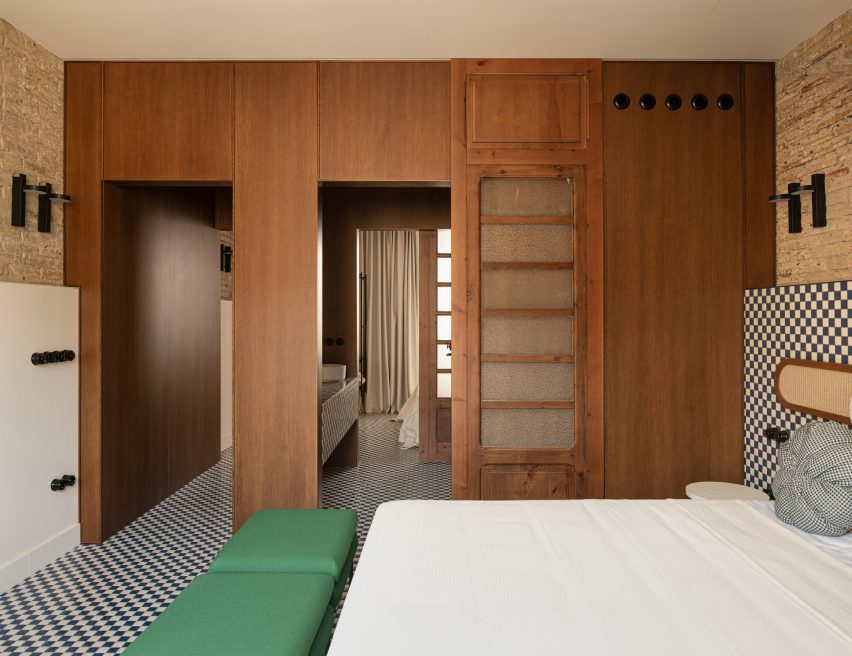
Another key local material – esparto grass fibre – is less noticeable than the tiles but pops up throughout the house to add textural interest.
Traditionally used to make ropes, baskets, mats and espadrille sandals, the flexible natural material was repurposed to form headboards and backrests, and even clad the suspended ceilings in the bathrooms.
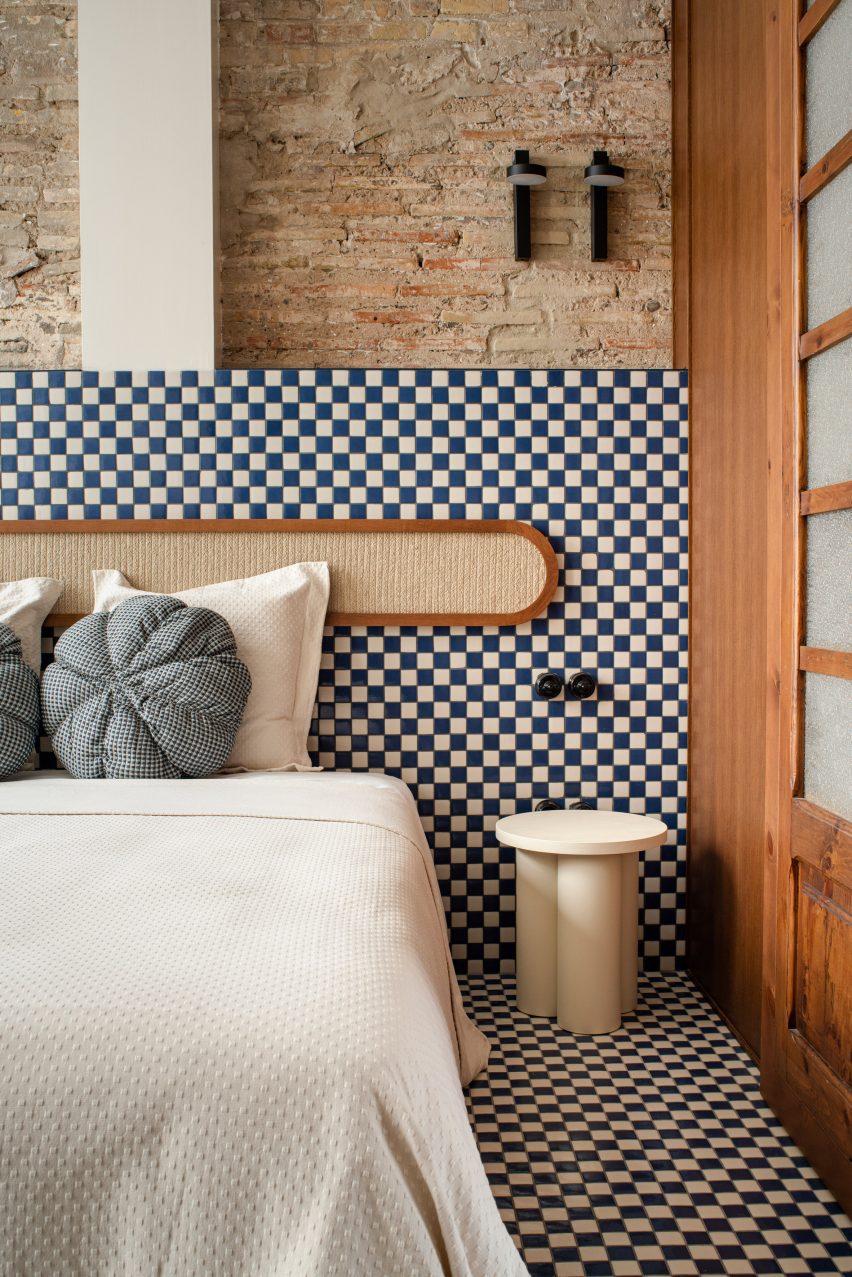
"This material has been used because of its roots in the traditions and life in the Mediterranean area, especially in the Valencian community," the studio said.
"For Viruta Lab, the legacy comes from its use by men of the countryside and the sea, by the original residents of the Cabanyal, those men who used to wear espadrilles."
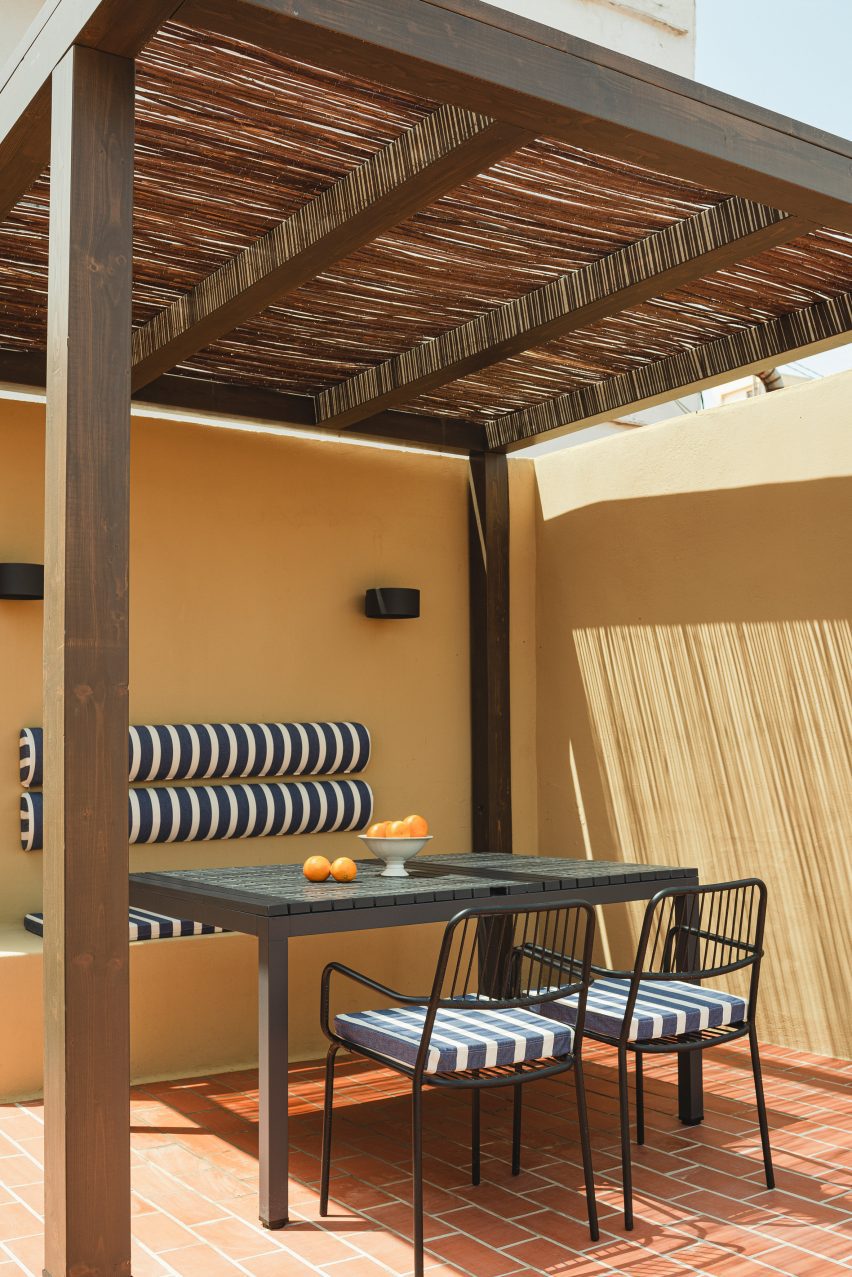
As well as a clay-tiled roof terrace with a shaded outdoor dining area, the house also features a sensitively restored inner courtyard, complete with a stone water trough where the owner's grandfather once dried his fishing nets at the end of a day's work.
Other projects that celebrate Valencia's historic architecture include a 1920s penthouse that was renovated to celebrate its original mosaic floors and an octogenarian home in El Cabanyal that was updated using traditional construction techniques and local materials.
The photography is by David Zarzoso.